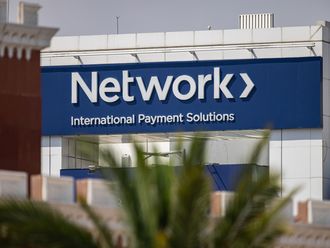
Many of us have a myopic view of transferring money, looking only at the currency exchange rate. We don’t bother with the bigger picture: how to make the most of the transfer to get the biggest bang for your buck. Here’s a quick rundown of what you need to remember when sending remittances home.
Agent network
You’re likely to find plenty of options to send money home at all the money exchange houses in the UAE. Most offer well-known systems such as Western Union and Moneygram, but an increasing number of exchange houses are now offering their own services such as Al Ansari Exchange’s Cash Express.
Additionally, you’ll find services dedicated to particular countries, such as Everest Remit and Himal Remit, both of which specialise in sending remittances to Nepal. Whichever service you choose, make sure the company has an adequate network of agents in your destination country to ensure the recipient can receive the money quickly and easily. There’s no point in using a cheaper service if the person receiving the money will have half a day’s travel to collect it.
Adequate identification
You’ll need to identify yourself to the exchange house staff through a valid passport or Emirates ID. Also, you can’t be both the sender and the recipient when sending money home. So if you’re intending to collect it on arrival when you go home on vacation, you’ll need to take someone else along to send the money.
Beneficiary details
Basic information, yes, but easily forgotten if you’re in a rush. Make sure you have all the details of the person you’re sending money to and ensure you know the correct spellings. If you’re sending a remittance to be collected at a money exchange house in your destination country, you’ll also need a phone number for the recipient.
Familiarity with rules
Most countries have a choice of banks and financial institutions that deal with incoming money transfers, so you’ll be able to weigh the pros and cons of each and choose the best available rate.
Remember, however, that they may have limitations on how much can be sent in one transaction. For example, some banks in the Philippines only allow a maximum of 50,000 Philippine pesos (about Dh4,195) in one remittance, so even if their rate is the best you won’t be able to take advantage of it if you want to send more than this amount.
One of the best ways to make sure you don’t get caught on the wrong foot with changes in rules and regulations is to regularly check financial news from your home country so you’ll be aware of any new legislation affecting inward remittances.
Overall cost
While remittances aren’t services you’re likely to get a discount on — a quick scan of money exchange houses in the UAE reveals considerable consistency in remittance charges — it might be worth double-checking if you can take advantage of any other benefits.
Many houses run promotions and special offers as well as loyalty schemes for repeat transactions. It’s especially worth checking up on during holiday periods such as Ramadan and Eid. Other houses even organise promotional schemes offering customers the chance to win prizes.
The best rates
Exchange rates can vary according to demand, so you’ll probably get a better deal if you choose a quieter time to send money home.
Many workers in the UAE tend to send remittances close to holidays, such as Eid and Ramadan, which is when the rates are high. If you can avoid it, wait until the holiday period is over.
If you’re a regular sender, you’ll also notice variations in rates at different times of the day or week. Time your remittance accordingly; you might only gain a few dirhams a time, but in the course of a year, it will all add up.














